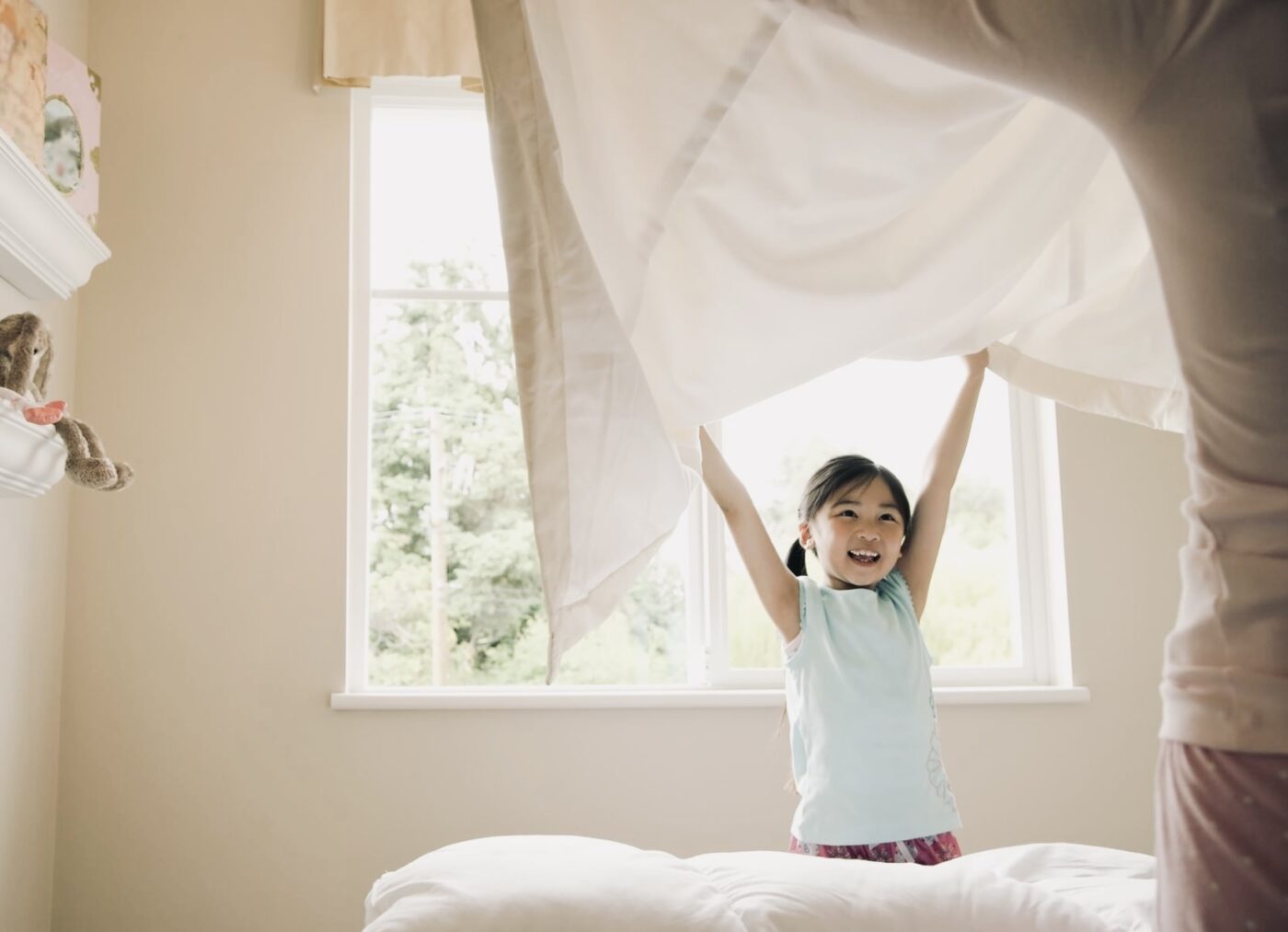Going Out to Dinner with Kids While on a Sleep Schedule
6 Steps for a Smooth Crib to Bed Transition
If your child is falling asleep independently, sleeping well through the night, and you decide it’s time to upgrade from a crib to a bed, how do you transition from the crib to a bed…smoothly?
Well, first you need to recognize that many toddlers aren’t in love with change, so allow it to be a gentle process, and be patient with your kiddo’s feelings about the experience. In addition, parents often transition the crib to a toddler bed, first. Toddler beds are often quickly outgrown. We recommend moving from a twin to a full bed to limit the amount of changes to sleep space in a short amount of time.
Here are six other methods for making the crib to bed transition a smooth one:
1. Talk About It – But Not Too Much.
The first step is to prepare your little one by answering any questions they have. If your toddler loves imaginative play, reading age-appropriate books or using role play will help prepare your little one for making the switch to a bed. Ask them how they feel about it! Share your excitement, but be careful not to make it too big of a deal or you’ll unintentionally make them nervous.
2. Include Them in the Process.

Let your little one be a part of the process. You could allow your son or daughter help you pick out the bed, or if you have one already, maybe new bedding, a pillowcase, or a stuffed animal. When your child has ownership over a part of the process, it can make a kiddo feel more secure overall. In that way, the unknown is less scary and overwhelming, and they feel they have some say in the move to a bed.
3. Keep a Schedule.
You don’t want to make these changes when your child is overtired (or undertired, for that matter). Make sure your toddler’s schedule provides age-appropriate awake windows. Further, ensure the bedtime routine stays the same, even if the sleeping environment is a bit different. Keeping the bedtime routine as similar as possible will make the transition from crib to bed smoother because your child is familiar with the expectations.
4. Have a Plan in Place for Handling Challenges.
We talk a lot about setting toddlers up for sleep success in our blog on toddler sleep regressions blog. Toddlers see the world in black and white, so having clear boundaries around bedtime, consistency with how those boundaries are upheld, and offering choice where possible can help keep challenges few and far between. Toddlers also love visuals, so displaying expectations clearly can help your toddler to understand what is expected of them.
5. Be Consistent.
You’ve set the expectation, and your follow through will pay off.
You don’t need to yell, and there is no benefit in lecturing. Simply do what you said you were going to do. Repeat the rules in a neutral tone, and expect your little one to get back to bed so they can get to sleep (or back to sleep) on their own. Your first few nights after moving from a crib to a bed may be a little challenging. Keep realistic expectations so you don’t get exasperated or even worse- angry.

6. Check for Safety.
Moving from the safety and confinement of a crib to a bed results in a lot more freedom for your toddler. Make sure that their bed is placed at least 3 feet from the wall, that large furniture is secured to any walls, and that outlets are covered. It can be very tempting to a toddler to be able to explore their room so ensuring that their room is safe, they are on an age-appropriate schedule, know their expected behavior, and removing anything that might be especially tempting, can help them fall asleep quickly without any trouble. Change and transition can overwhelm a toddler, however, your consistency will make for a successful transition.
Before you know it, you’ll both have made a successful crib to bed transition. Congratulations in advance!


